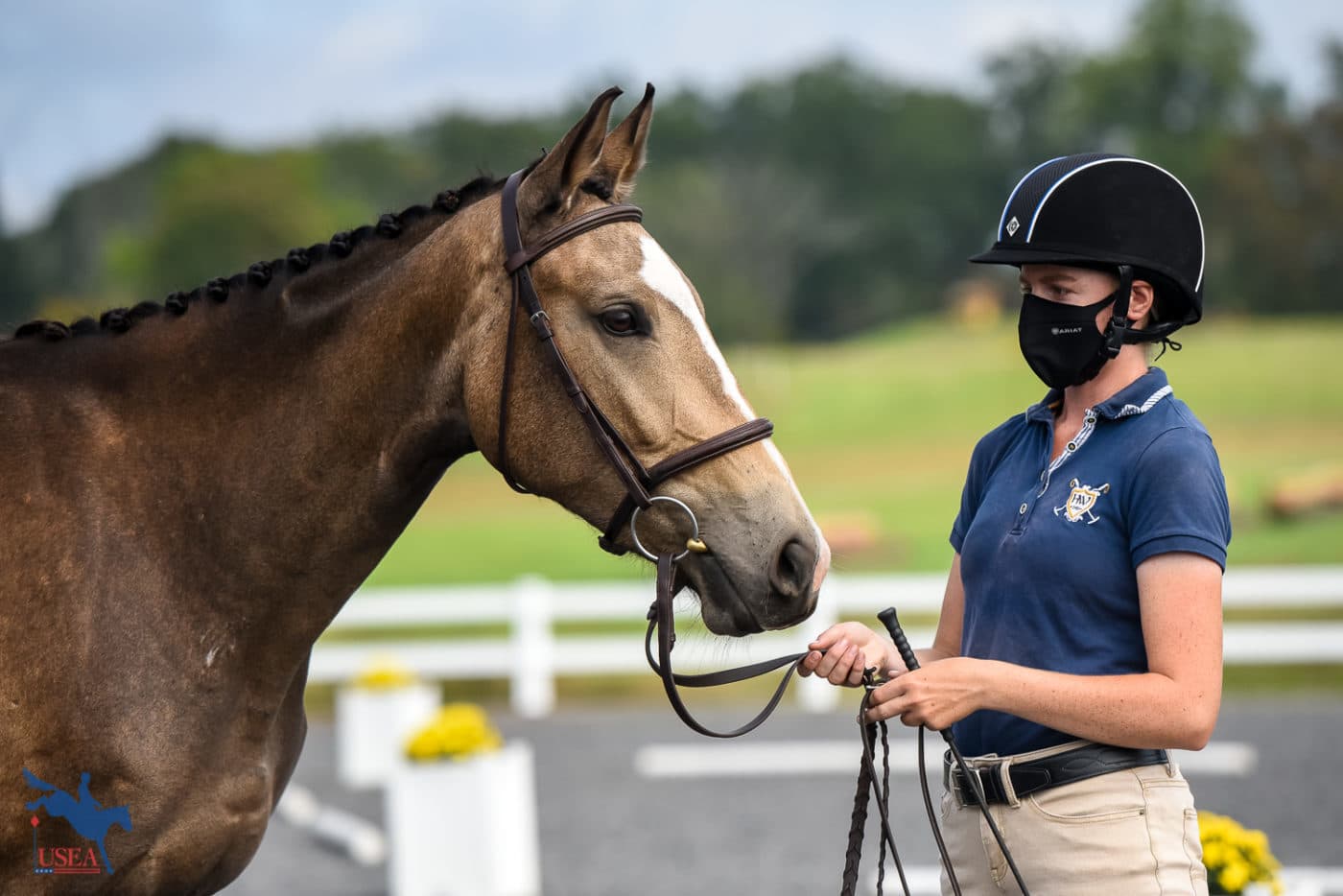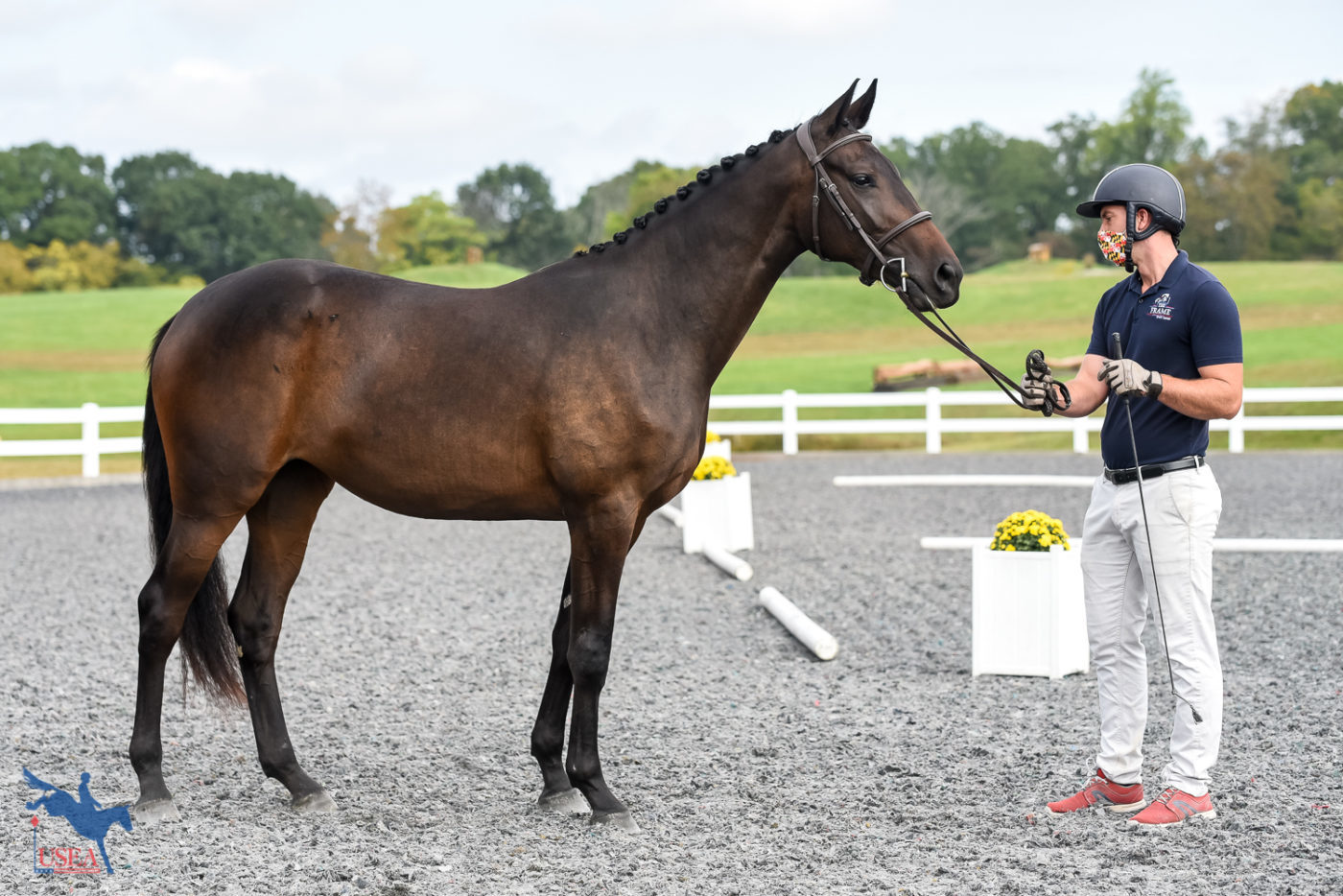Behind the FEH Judge’s Score: The Tri-Athletic Type

Introduced in 2007, the USEA Future Event Horse (FEH) program evaluates the potential of yearlings, 2-year-olds, 3-year-olds and 4-year-olds to become successful upper level event horses. Now, this thriving program has over 50 horses already qualified for the 2022 USEA FEH Championships! The FEH judges have gone through continuous judge training and to understand the judging, there are plenty of resources available to anyone and everyone that might be interested, this includes the general FEH scoresheet that is used at every FEH qualifier.
The first specification on the general FEH scoresheet is type. So, what does type mean and what type of horse is going to score well in FEH? “[We] need a horse that’s going to be able to do all three phases so, I’m looking for a type [of horse] that will move well enough to do a test, jump well enough to jump, and for me, a big priority competing at the upper levels is that they will be okay at the 10- or 11-minute mark [on cross-country] which means they will need to have a considerable amount of [Thoroughbred] blood,” said FEH Championship judge and FEH Committee Co-Chair, Robin Walker.
“We’re looking for a tri-athletic type,” said Susan Graham White who is also the FEH Committee Co-Chair with Walker and an FEH Championship judge. “It’s going to be a more refined horse. It’s the kind of horse that will have the speed and endurance to do the upper levels. It’s going to have enough scope in its movement to show the extended and medium paces in dressage, and also, to have a huge ground covering gallop for the cross-country. If we were looking for a [pure] dressage type we would be looking for a more lofty mover and one that can piaffe and passage but, that’s not the kind of movement that lends itself to big, galloping movement. So, our event horses have to be more of the sport horse refined type.”
Walker added, “the only catch is that these types [of horses] can turn up in different sizes – they don’t show up in just one cookie-cutter type model.”

The second specification on the FEH scoresheet is conformation and it’s broken into two different specifications – frame and legs/feet. “If it’s going to be a tri-athletic horse, it has to have a structure that will lend itself to natural balance,” said Graham White.
Walker said, “good conformation leads to soundness. Horses should be straight, meaning that if you stand in front of it and as you watch [it move] it should be straight, it shouldn’t dish and the leg movement comes out correctly.”
“In conformation, there’s no perfect horse out there. You can find little things on any horse, many won’t matter much in the long run. For instance, if the horse had a long neck, a short neck, or a deep set neck – that won’t affect their general soundness but, it might affect their trainability factor. We’re more concerned about [conformation flaws] that will lead to soundness issues, particularly in the legs. Things in front like being very toed out, or very toed in, or having offset knees, very over angled behind. We don’t want to see pasterns that are way too short or way too long especially if they are long and soft where there’s too much stress on the horse to be holding up over time,” said Graham White. “It would have to be extreme, the more the angulation gets deviated, the more problem it becomes.”
Walker emphasized the importance of a pair of feet. “I can’t have horses with two different front feet. If a horse has flat feet, that can be managed with good shoeing. But, I can’t have two different front feet like a club foot and a normal foot.
“We have to remember that they are youngsters so, they should be clean. Their limbs need to be as correct as possible, and their joints should be tight and clean,” said Walker.
Graham White added, “we don’t count anything against blemishes. Blemishes would be, for instance, a scar that a horse has or a minor wound that was not bleeding but if it scraped in the trailer. We are not going to count against splints because we don’t know how that splint happened but as long as the horse is sound and everything else is correct. We also wouldn’t count against a capped hock. That is a notable blemish but shouldn’t affect soundness.

After conformation, the next specification on the FEH scoresheet is movement and this is also broken into two separate sections – the walk and the trot. Graham White explained what FEH judges look for in the walk. “We want the walk to be pure, that the biomechanics are correct, and that it’s a clear 4-beat walk. The horse naturally wants to use it’s topline, wants to show freedom in the shoulder, and cover ground. [We want] a horse with a longer walk because the walk translates biomechanically to the canter so, for that reason, we have a little higher coefficient on our walk score [than the trot].”
Walker added, “the best walk is where the horse uses its whole body – it’s supple, it’s even, and it’s rhythmic,” said Walker.
Graham White also explained what FEH judges look for in the trot. “We are looking for a correct trot, a clear 2 beat trot. We want the horse to show scope in the trot. A natural rhythm is great – a cadence feel rather than a rushing feel. We want to see a natural balance and an uphill tendency. We don’t want [a trot with] high knee action. We would rather see horses that move out than upward in front. Although we still want to see a good use of the hind end to lift them off the ground.”
The final specification of the FEH scoresheet is the general impression which is explained in the FEH Judging video below. The video below will also further explain the specifications and quotes provided in this article.
About the USEA Future Event Horse Program
The USEA introduced the Future Event Horse Program in 2007 in response to the popularity of the already established USEA Young Event Horse Program. Where the YEH program assesses 4- and 5-year-old prospective event horses based on their performance, the FEH program evaluates yearlings, 2-year-olds, 3-year-olds, and 4-year-olds for their potential for the sport based on conformation and type. Yearlings, 2-year-olds, and 3-year-olds are presented in-hand while 4-year-olds are presented under saddle at the walk, trot, and canter before being stripped of their tack and evaluated on their conformation. Divisions are separated by year and gender. At the Championships, 3-year-olds and 4-year-olds are also required to demonstrate their potential over fences in an additional free-jump division. Click here to learn more about the Future Event Horse Program.
The USEA would like to thank Bates Saddles, Parker Equine Insurance, SmartPak, Standlee Premium Products, Saratoga Horseworks, Capital Square, Kerrits, and The Jockey Club for sponsoring the Future Event Horse Program.













